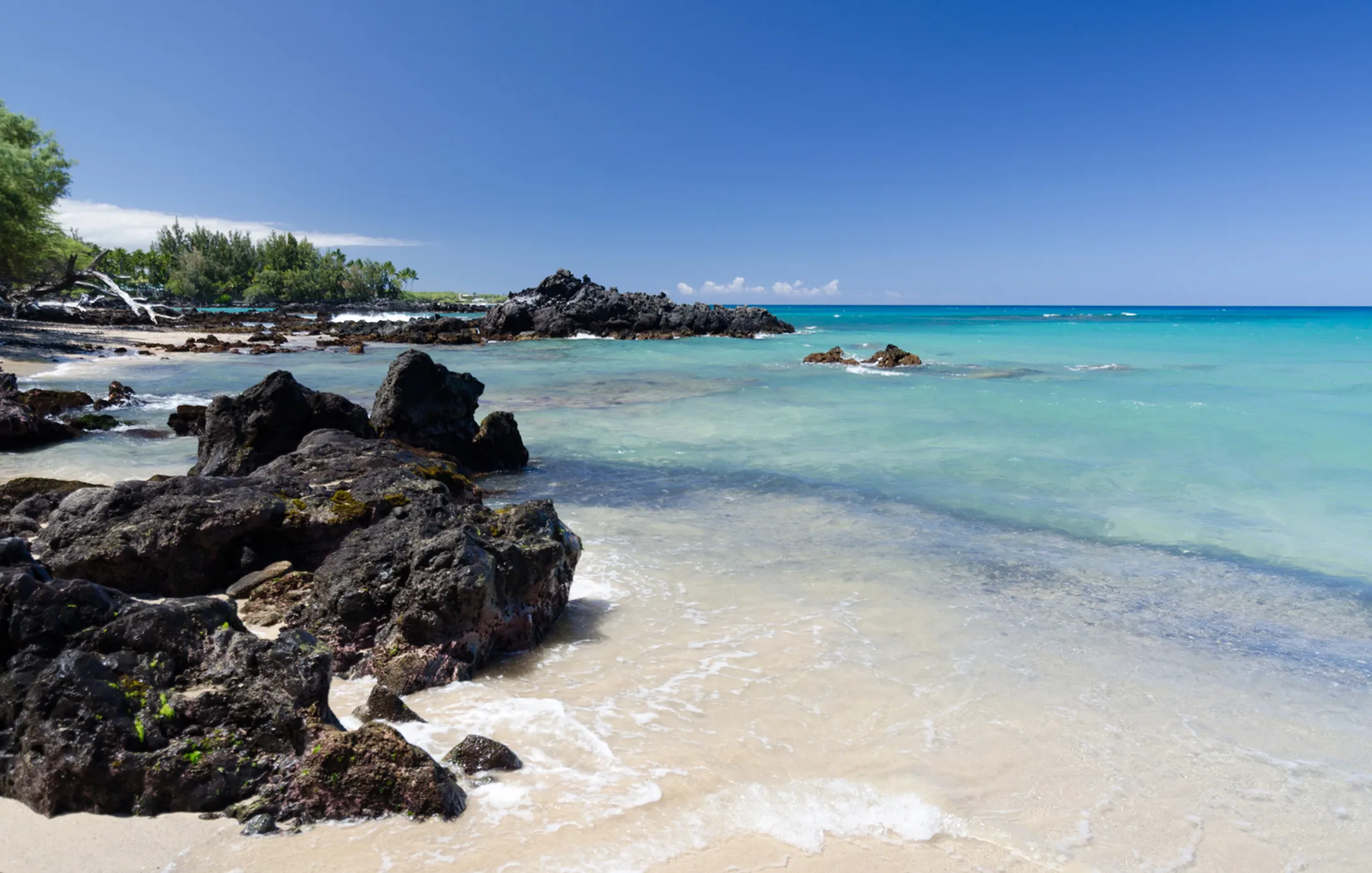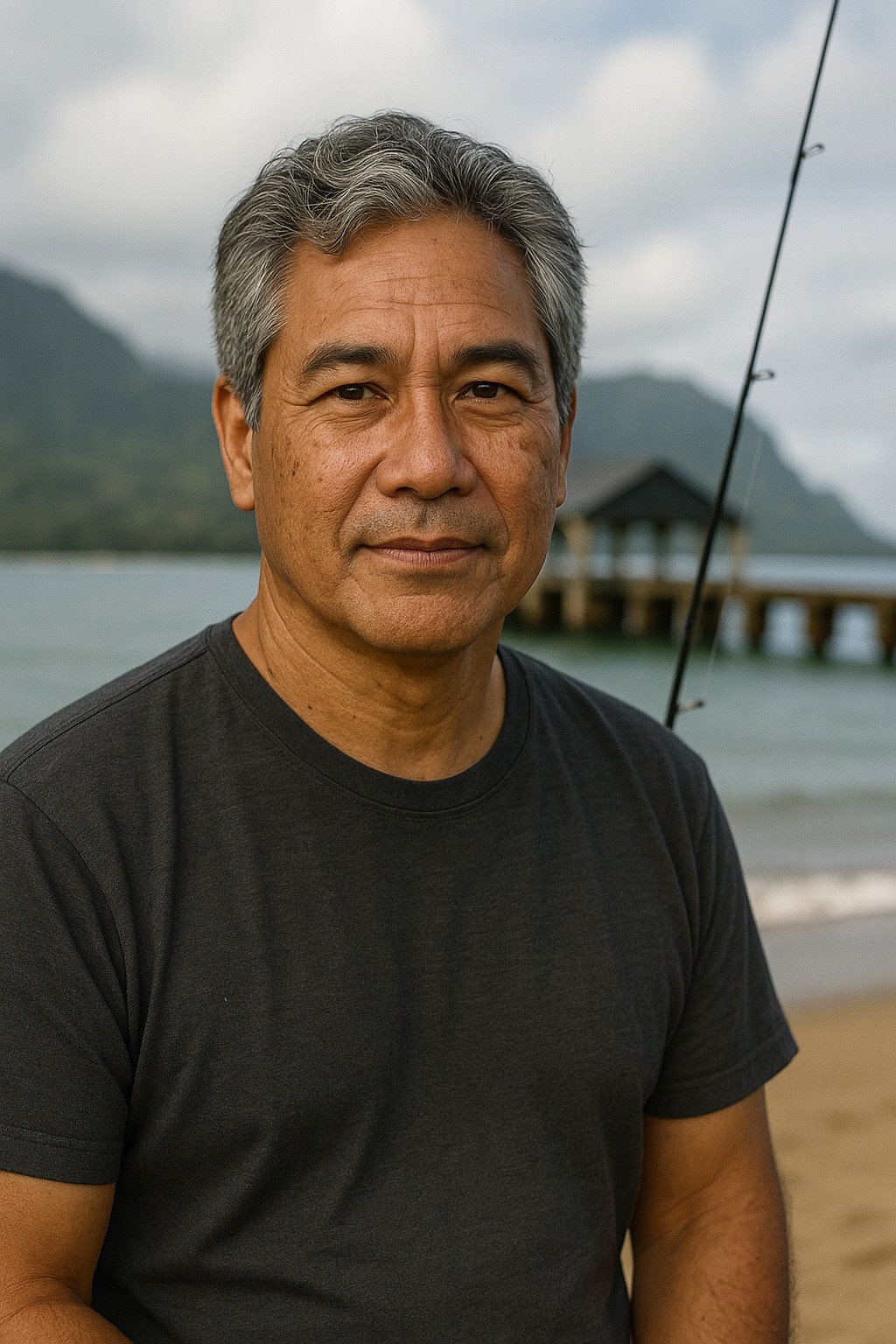
「Minivan Arrival」Honolulu Airport ⮕ Waikiki Hotels Exclusive Transfer
Family Photography Pros Oahu • Service • Honolulu • Oahu

Shade, Thorns, and All-Day Comfort

Written by a Local Expert
Kalani MillerWaialea's charm lies in its rugged, natural state, but this same wildness that makes it special also means that comfort requires preparation and knowledge. It's not a manicured resort beach with attendants and amenities—it's a piece of authentic Hawai'i that demands respect and understanding. The key to enjoying this beach lies in understanding its most dominant and defining feature: the Kiawe tree.
The ancient, gnarled Kiawe trees (Prosopis pallida) are the defining feature of Waialea's shoreline and the source of both its greatest blessing and its most significant challenge. These trees, with their twisting branches and delicate, feathery leaves, create a beautiful, almost otherworldly canopy that provides the most valuable commodity on a sunny Kohala Coast day: shade.
The importance of this shade cannot be overstated. The Kohala Coast is one of the driest, sunniest places in all of Hawai'i, with some areas receiving less than 10 inches of rainfall per year and enjoying over 350 days of sunshine annually. Without the Kiawe trees, Waialea would be virtually unusable during the heat of the day.
However, these trees come with a significant warning that every visitor must understand and respect. The Kiawe is a non-native species, first brought to Hawai'i from Peru in 1828 as part of early efforts to provide firewood and animal fodder. While it has naturalized and now plays an important role in coastal ecosystems, it carries what locals have come to call the "Kiawe curse": thorns.
Kiawe trees produce incredibly sharp, hard, inch-long thorns that litter the ground beneath them in astonishing quantities. These thorns are not just sharp—they're engineered by nature to be nearly indestructible, capable of puncturing rubber flip-flops (slippahs), sturdy hiking boots, bicycle tires, and even car tires with surprising ease.
I never, ever walk from my car to the water's edge without sturdy shoes on, and this is the number one rule I share with anyone who's visiting Waialea with me for the first time. A Kiawe thorn in the foot is a painful and surefire way to ruin a perfect beach day and potentially end a vacation with a trip to the emergency room.
The pain of stepping on a Kiawe thorn is legendary among locals, and the injury can easily become infected if not properly treated. The thorns are often dirty and can introduce bacteria deep into puncture wounds, leading to serious infections that require medical treatment.
The shade provided by Kiawe trees creates microclimates that can be 10 to 15 degrees cooler than the open sand, with constant trade winds filtering through their branches providing natural air conditioning.
These trees grow right down to the sand line, creating a series of intimate, private alcoves where you can set up your own little piece of paradise. This gives the beach its secluded, "old Hawaii" feel.
Because Waialea is more secluded than resort beaches and has no concession stands, rental shops, or vendors, you need to be completely self-sufficient for your visit. Packing the right gear is not just about comfort—it's about safety and being able to fully enjoy this incredible natural resource.
This is absolutely non-negotiable and should be the first item on your packing list. You need them for the walk from the parking lot through the Kiawe forest to protect your feet from thorns.
Choose shoes with thick, puncture-resistant soles. Many locals prefer reef walkers or water shoes that can be worn both on land and in the water, providing protection from thorns on shore and from rocks and urchins in the water.
The Kohala Coast is hot and dry, and the combination of sun, salt air, and physical activity can lead to dehydration quickly. Bring more water than you think you'll need—at least one gallon per person for a full day. The nearest store is miles away, and there are no water fountains or vendors at the beach.
Protect your skin and protect the coral ecosystem you've come to see. Look for mineral-based sunscreens with zinc oxide or titanium dioxide as the only active ingredients. Apply liberally and reapply often, especially after swimming.
Essential sun protection for both in and out of the water. A wide-brimmed hat provides crucial protection for your face and neck, while sunglasses protect your eyes from the intense reflection off the water and sand.
Bring your own mask, snorkel, and fins, as there are no rental facilities on-site. If you don't own gear, rent it in Kona or Waikoloa before making the drive to Waialea. Make sure your mask fits properly and your fins are comfortable.
Given the remote location and the presence of Kiawe thorns, a basic first aid kit is essential. Include antiseptic, bandages, tweezers for thorn removal, and any personal medications. The nearest medical facilities are in Waimea or Kona, both at least 30 minutes away.
Essential for setting up your comfortable spot under the Kiawe trees. Quick-dry towels are ideal as they pack smaller and dry faster.
There are no food vendors anywhere near Waialea. Consider the heat when choosing foods—items that won't spoil in high temperatures are essential.
Cell service can be spotty at Waialea, making it the perfect place to disconnect. Bring a good book, cards, or other non-electronic entertainment.
Navigating to Waialea is straightforward once you know what to look for, but the journey itself is part of the experience. The drive along the Kohala Coast offers spectacular views of Mauna Loa and Mauna Kea, and the landscape changes dramatically as you move from the green resorts of Waikoloa to the stark, beautiful lava fields that surround Waialea.
Waialea Bay is located about 23 miles north of the Kona International Airport, just south of the more famous Hāpuna Beach. The drive from the airport takes about 30 minutes under normal traffic conditions, but can take longer during peak travel times or if you get stuck behind slow-moving vehicles on the two-lane sections of highway.
The secret to a stress-free day at Beach 69 is to arrive early, especially on weekends or during peak tourist seasons (December through March and June through August). I aim to be at the parking lot by 8:30 AM, which gives me time to pay, gear up, and be on the beach by 9:00 AM.
Early arrival offers multiple advantages: the morning light is beautiful for photography, the water is typically calmest, and you'll have your pick of the best shady alcoves under the trees. You'll also get to experience the beach in its most peaceful state, before the day-trippers arrive.

Family Photography Pros Oahu • Service • Honolulu • Oahu

Family Photography Pros Oahu • Service • Honolulu • Oahu

The Magic Merman Snorkel Charters (Au Au Kai, Inc) • Snorkel • Lahaina • Maui